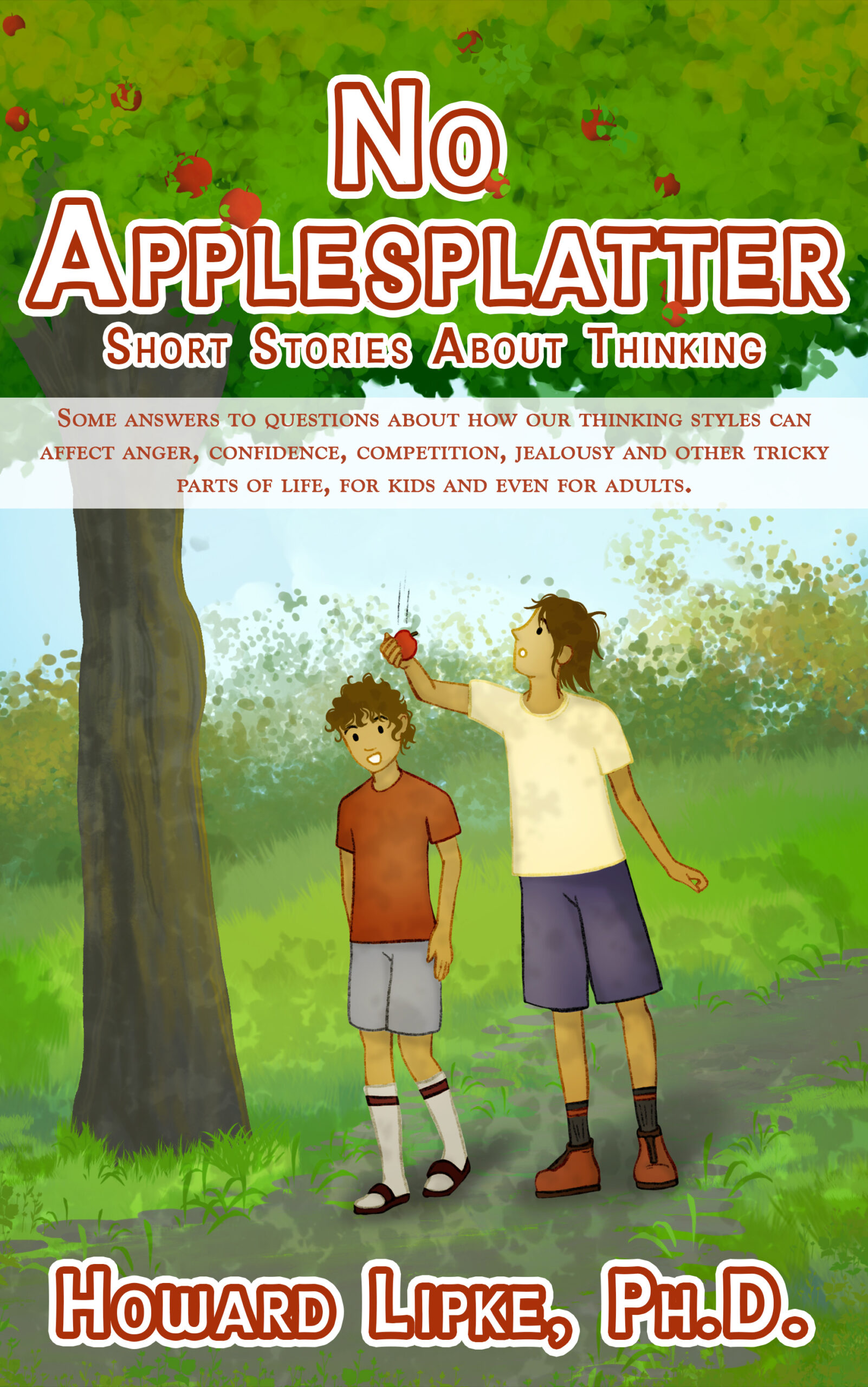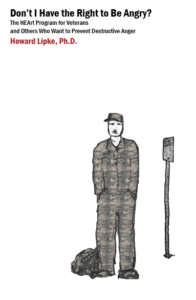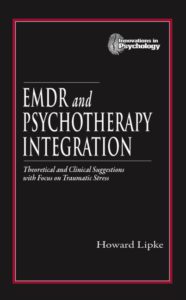This site has information developed over 45 years of study and work in clinical psychology, most often with combat veterans (bio, CV). It is meant to be shared freely. While anyone might find the material interesting (Really, isn’t everyone a psychologist?) this site specifically addresses:
Presentations
Presentations on preventing destructive anger, EMDR, understanding the psychological effects of trauma through the arts, stigma and PTSD, concerns of veterans and families, and other topics addressed at this website can be arranged by contacting Dr. Lipke at [email protected]
Books
 No Applesplatter: Short Stories About Thinking
No Applesplatter: Short Stories About Thinking
 Don’t I Have the Right to Be Angry?: The HEArt Program for Veterans and Others Who Want to Prevent Destructive Anger
Don’t I Have the Right to Be Angry?: The HEArt Program for Veterans and Others Who Want to Prevent Destructive Anger
 EMDR and Psychotherapy Integration
EMDR and Psychotherapy Integration
More about Howard Lipke
The brochure For War Veterans & Family: On Combat Exposure was written in late 2008 for veterans and their family members who were connected to the Stress Disorder Treatment Unit (SDTU) at what was then the North Chicago VA Medical Center, and is now the Lovell Federal Health Care Center. Although there were many educational materials available on the psychological effects of combat (e.g. National Center for PTSD internet resources available at: http://www.ptsd.va.gov/public/) these appeared to focus on describing PTSD symptoms, attempting to normalize them, and encouraging treatment. They certainly met a need, however, their focus on diagnosis and symptoms failed to address essential issues that would help to clarify a reasonable understanding of how the effects of combat related stress might occur, and what paths might lead toward relieving them. The standard approach also did not answer many of the questions that had arisen over the years from veterans and family members.
In an effort to meet these needs work began on the brochure. As was the process with many of the clinical materials developed for the SDTU, after a first draft was completed by staff it was presented to groups consisting of residents and some alumni outpatients of the SDTU program. Their feedback was incorporated into subsequent drafts. This process continued until there were two consecutive groups who found no objections to the material. The brochure was then made available to veterans and family members in its completed form.
Below are two paragraphs from a paper on stigma, especially as it applies to veterans. (Actually there are two papers, one addressed to veterans and one more academically written for MH professionals) In the second paragraph it is suggested that if vets, or anyone with trauma related “symptoms,” is going to get down on themselves they should at least “Get it right.” which is the name of the academically oriented paper these quotes come from.
That stigma (being marked or believing one is marked as disgraced) is a primary barrier to veterans seeking help to overcome the destructive psychological effects of trauma is one of those cultural phenomena which is easy to see, widely acknowledged, and also supported by research (Hoge et al 2004) . As is often pointed out, the stigma has two manifestations, (e.g., Corrigan, 2004) the belief by others that the need for psychological help is a sign of essential inferiority, and the same belief held by the self. Both are important with the self-stigma clearly most damaging.
Stigma terms
- Current stigma term: Crazy Vet
More accurate term: Stuck Transferer
This is the stigma associated with re-experiencing symptoms. “Stuck Transferer” refers to the idea that flashbacks and reliving nightmares are a manifestation of unprocessed memory. In Horowitz’s terms (1976) memory has not moved (transferred) from short term to long term storage. In the version presented to veterans this is called moving from “reliving” to “historical” or “intellectual” memory.
 No Applesplatter: Short Stories About Thinking
No Applesplatter: Short Stories About Thinking Don’t I Have the Right to Be Angry?: The HEArt Program for Veterans and Others Who Want to Prevent Destructive Anger
Don’t I Have the Right to Be Angry?: The HEArt Program for Veterans and Others Who Want to Prevent Destructive Anger EMDR and Psychotherapy Integration
EMDR and Psychotherapy Integration